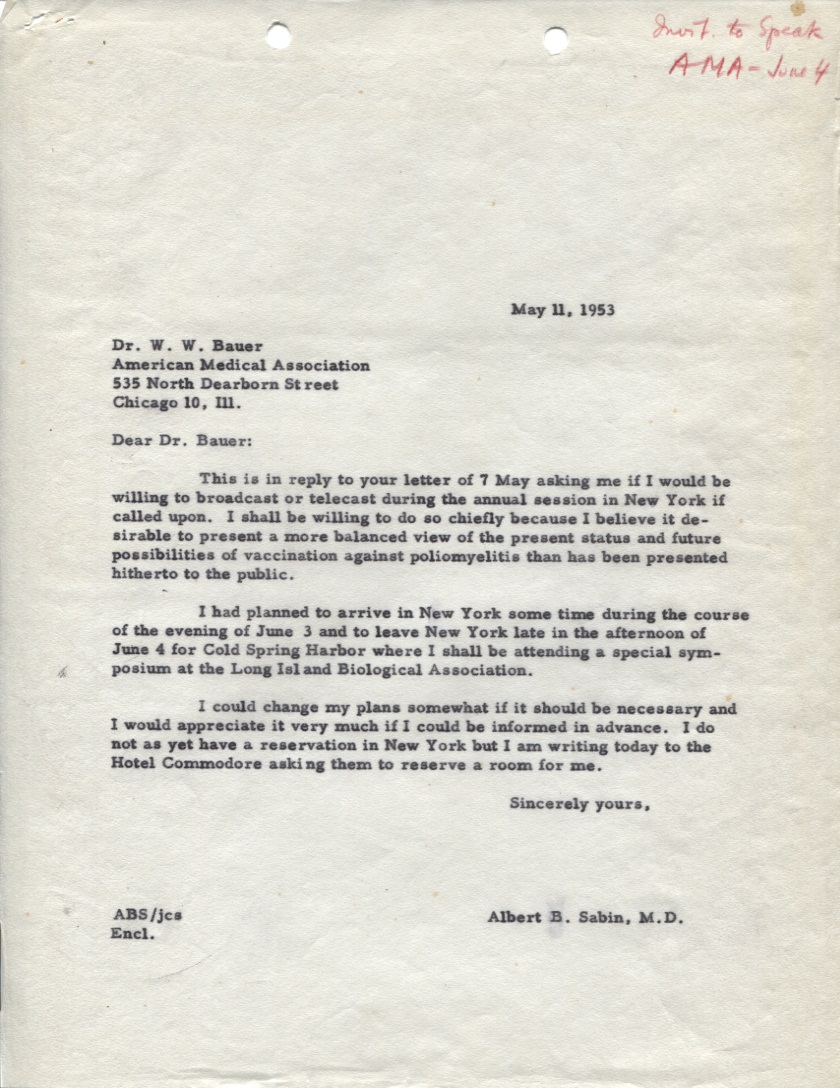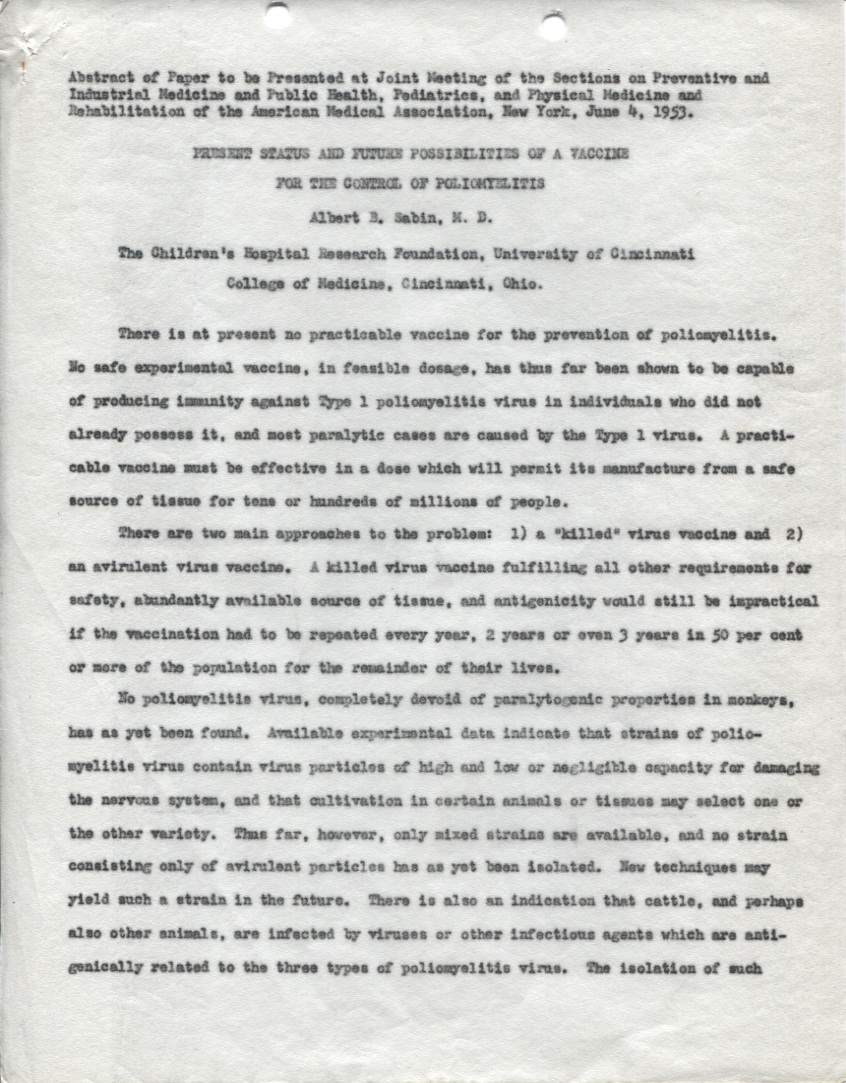In Hal Hellman’s Greatest Feuds in Medicine: Ten of the Liveliest Disputes Ever, one chapter is devoted to the dispute between Dr. Albert Sabin and Dr. Jonas Salk. Hellman chose this dispute as one of the ten that had “some special drama or scientific interest, that in some way influenced the future course of medical science, or that have had repercussions in our own day” (p. xiii). The chapter briefly discusses the history of polio and the development of the two vaccines, as well as the aftermath. Hellman argued that “Salk deserved better treatment” from his fellow scientists (p. 141). However, he also wrote, “But we must remember that in the Sabin-Salk feud there is no real victor” (p. 140).
In his analysis of the Sabin-Salk “feud,” Hellman mentions an incident in early 1953, where information about the killed-virus vaccine was leaked to the public prior to the publication of an article in the Journal of the American Medical Association. The newspaper articles about Salk’s vaccine gave the public hope in the fight against polio. On the other hand, these same newspaper articles painted Salk as a “glory hound” in the eyes of his fellow scientists (p. 136).
Found in Sabin’s correspondence are two letters between Dr. Sabin and Dr. W.W. Bauer of the American Medical Association. Dr. Bauer wrote Sabin prior to the 1953 American Medical Association Annual Convention, asking if he would be interested in any television or radio opportunities that may occur during the meeting. Bauer felt that Sabin’s paper on polio may be of interest to various news outlets. Dr. Sabin’s response to this letter can be seen on the right. With regard to interviews, Dr. Sabin wrote, “I shall be willing to do so chiefly because I believe it desirable to present a more balanced view of the present status and future possibilities of vaccination against poliomyelitis than has been presented hitherto to the public.” This quote may give a glimpse into his feelings regarding the amount of press that Salk’s vaccine had received after the leak of the killed-vaccine progress report.
Hellman’s chapter mentions the AMA Convention, where Dr. Sabin addressed the status of the polio vaccine in a session. Our collection contains an abstract of this session, “Present Status and Future Possibilities of a Vaccine for the Control of Poliomyelitis.” Dr. Sabin said, “A killed virus vaccine fulfilling all other requirements for safety, abundantly available source of tissue, and antigenicity would be impractical if the vaccination had to be repeated every year, 2 years or even 3 years in 50 per cent or more of the population for the remainder of their lives.” The abstract ends by saying, “[I]t is more correct to say that we have only just begun to learn than to create the impression that the job is nearly finished.” Sabin wanted to make his stance on the polio vaccines clear to everyone in the AMA session.
Of course, the two men went back and forth on the validity of their vaccines for many years after the AMA meeting. What is interesting about Hellman’s chapter on the dispute was his conclusion, asking readers, “Wouldn’t a friendly competition have been better all around?” and “[S]uppose the competition would have been friendly enough that one of them ended up convincing the other to switch sides?” (p. 141). One can’t help but wonder if these two men could have cooperated and eradicated polio together, or if they and their vaccines were destined to be at odds with one another.
In the end, the results of this feud – two competing vaccines – were key to virtually eliminating polio throughout the world. As Hellman noted, “Perhaps the feud was the better way after all, at least for the rest of us” (p. 141).
Note: The chapter on Sabin and Salk appears in the book by Hal Hellman, Greatest Feuds in Medicine: Ten of the Liveliest Disputes Ever (New York: John Wiley & Sons, 2001).
In 2010, the University of Cincinnati Libraries received a $314,258 grant from the National Endowment for the Humanities (NEH) to digitize the correspondence and photographs of Dr. Albert B. Sabin. This digitization project has been designated a NEH “We the People” project, an initiative to encourage and strengthen the teaching, study, and understanding of American history and culture through the support of projects that explore significant events and themes in our nation’s history and culture and that advance knowledge of the principles that define America. Any views, findings, conclusions, or recommendations expressed in this blog do not necessarily reflect those of the National Endowment for the Humanities.


